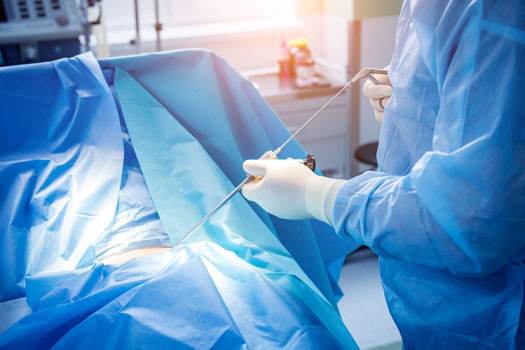
It's increasingly common today for spine-related procedures to involve minimally invasive techniques. This is one of the reasons a discectomy isn't necessarily "major" surgery in the traditional sense. Still, any spine-related procedure should be taken seriously, especially when it comes to recovery. Here's what you need to know about discectomies and what you can expect with this type of surgery.
Discectomies Combined with Fusion Surgery
According to Spine Universe, discectomies rank among the top spine-related surgeries performed today. At one time, it was common for disc removal to be combined with spinal fusion surgery. This is still likely to be the case if the entire disc needs to be removed to maintain spinal stability. If this combination is what's recommended for you, it’s considered major surgery.
Discectomies Performed as Standalone Procedures
A discectomy performed as a standalone procedure typically takes about an hour to perform, according to Johns Hopkins Medicine. The process usually involves the use of general anesthesia, which is when you're asleep for the duration of the surgery. There are different steps that may be taken with the actual procedure. If minimally invasive techniques are used, a microdiscectomy typically involves:
• Smaller incisions to access the affected disc
• Special instruments that allow the surgeon to clearly view the affected area
• Less disruption to nearby tissues and other parts of your spine
More often than not, only the disc material irritating a nearby nerve is removed when a discectomy is performed. This means the bulk of the disc may be left in place. It's also not unusual to be able to go home the same day of the procedure if it's done as outpatient surgery.
Recovering from a Microdiscectomy
A discectomy is still surgery. Therefore, you'll need to be cautious as you recover so you don't reinjure the affected area of your spine. Start by following any instructions you receive from your surgeon following your microdiscectomy. You'll also increase your odds of benefiting from a discectomy as you recover by:
• Sticking with your recommended physical therapy routine
• Reporting any unusual discomfort as your recovery advances
• Easing back into your normal routine
Reducing the Possibility of Needing a Discectomy
When possible, it’s best to avoid getting to the point where spine surgery becomes an option. This also applies to a procedure like a microdiscectomy that's more likely to be performed with minimally invasive techniques. You'll be more likely to accomplish this goal if you watch your posture, strive to remain within a healthy weight range, eat healthy foods, get regular exercise, and address minor issues early.
Although discectomy surgery is generally a very successful procedure, a hole is left in the outer wall of the disc. Patients with a large hole in the outer ring of the disc are more than twice as likely to experience reherniations after surgery. A new treatment, Barricaid, which is a bone-anchored device proven to reduce reherniations, was specifically designed to close the large hole often left in the spinal disc after microdiscectomy. In a large-scale study, 95 percent of Barricaid patients didn’t undergo a reoperation due to reherniation in the 2-year study timeframe. This treatment is done immediately following the discectomy—during the same operation—and doesn’t require any additional incisions or time in the hospital.
If you have any questions about the Barricaid treatment or how to get access to Barricaid, ask your doctor or contact us at 844-288-7474.
For full benefit/risk information, please visit: https://www.barricaid.com/instructions.


Comments